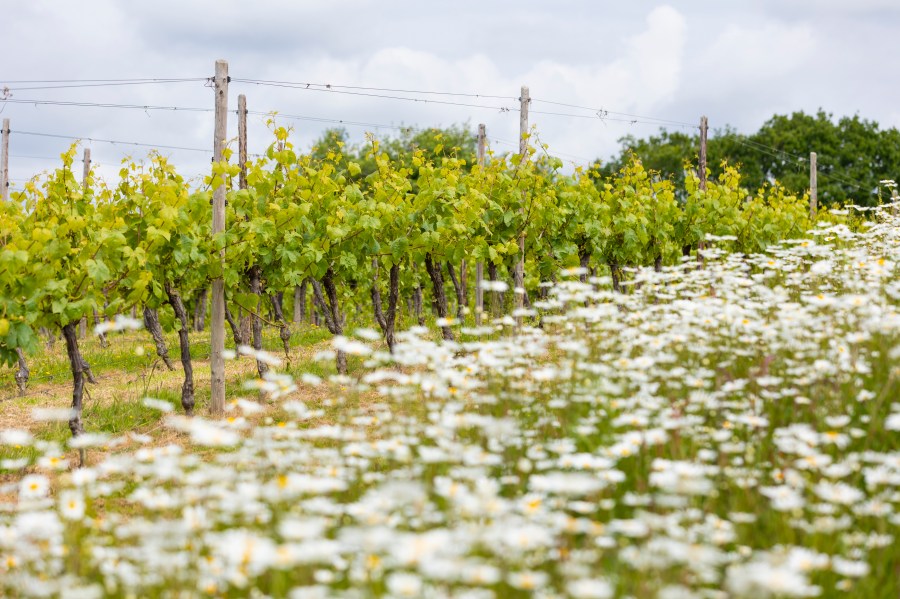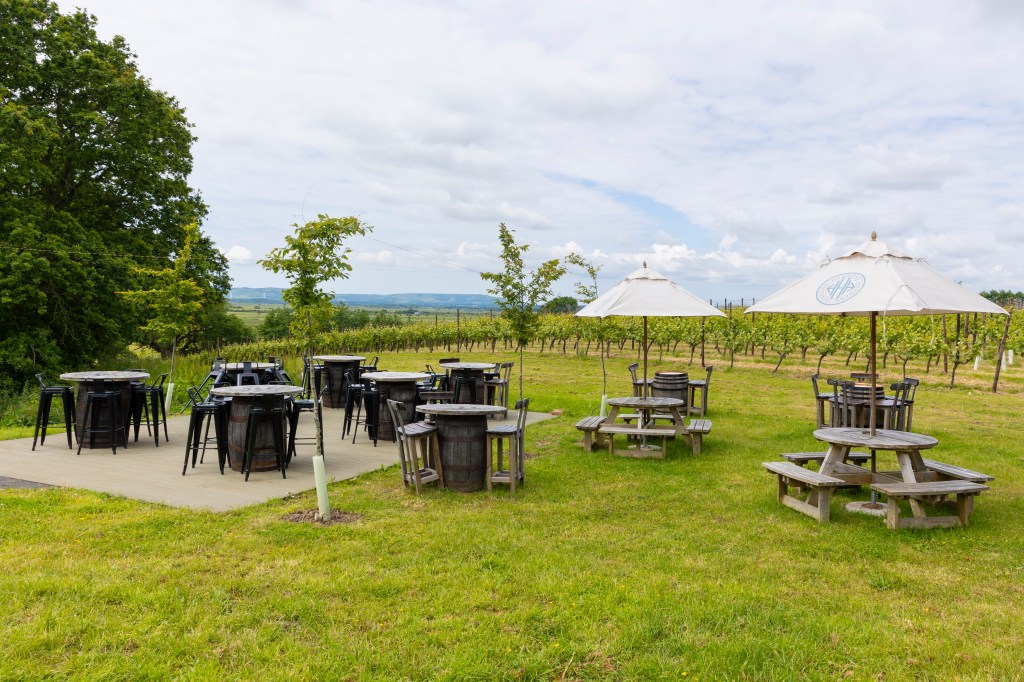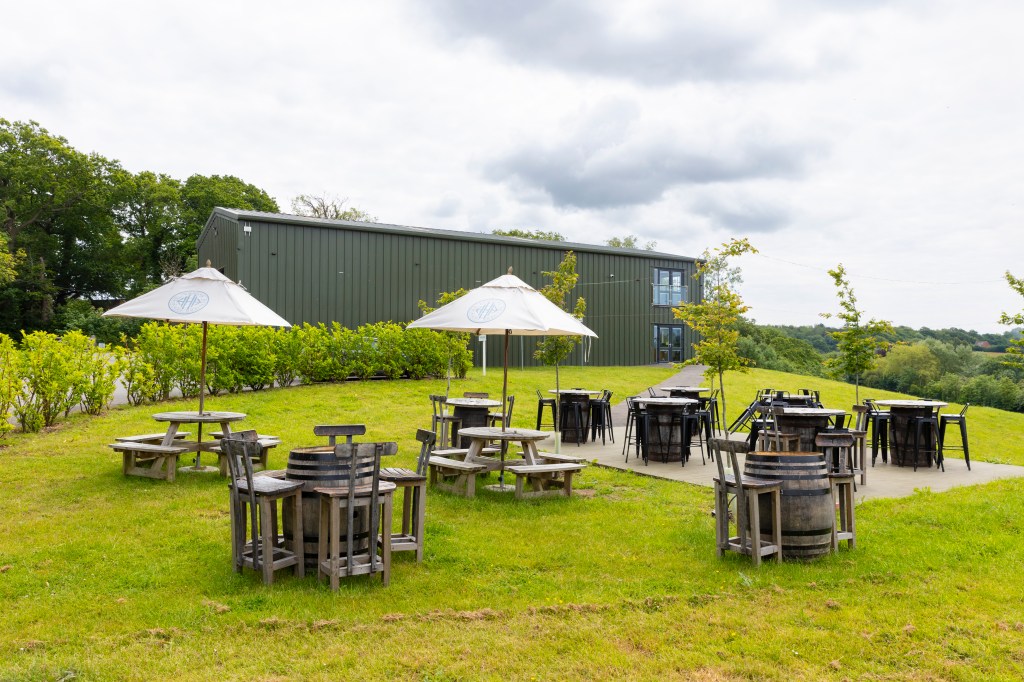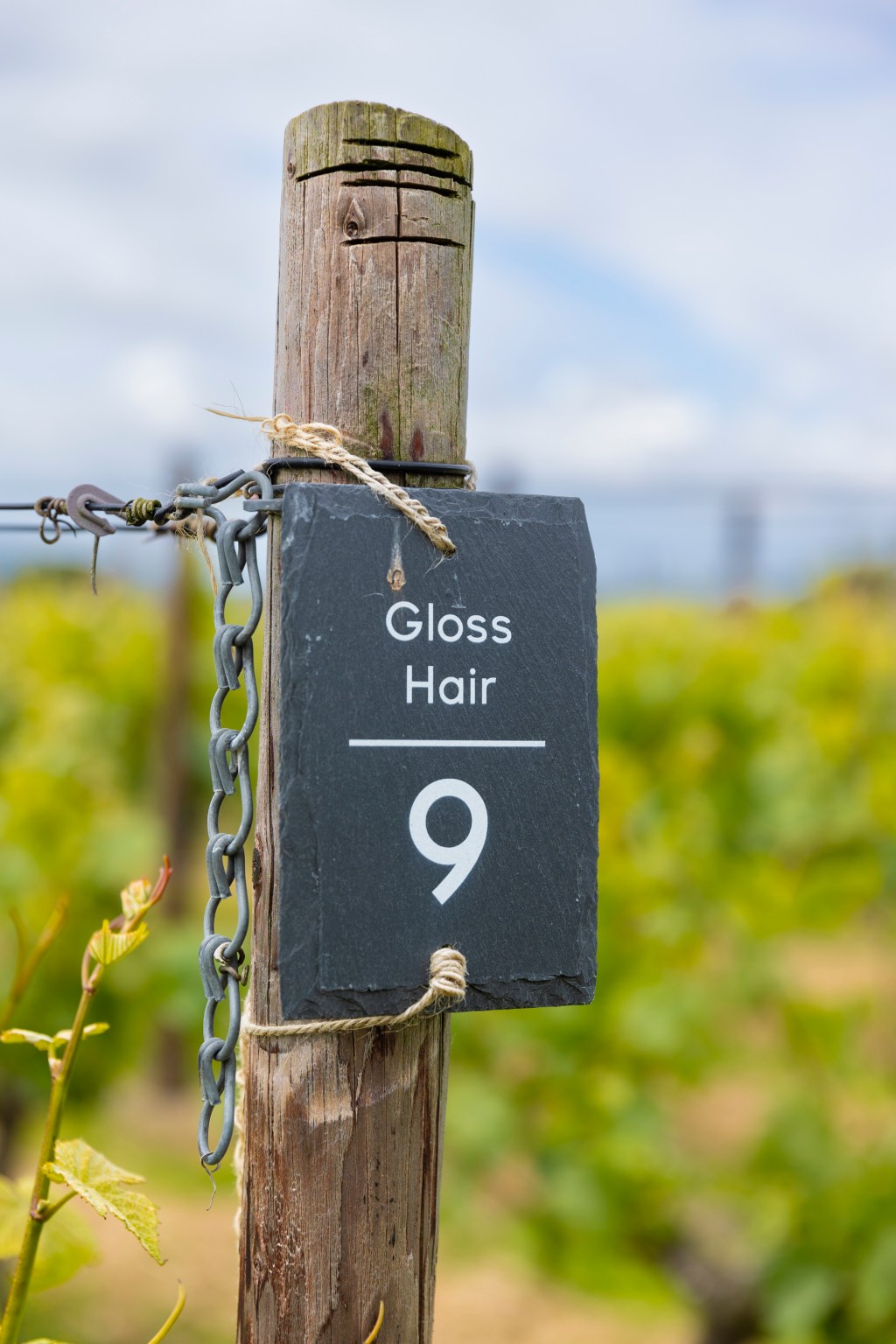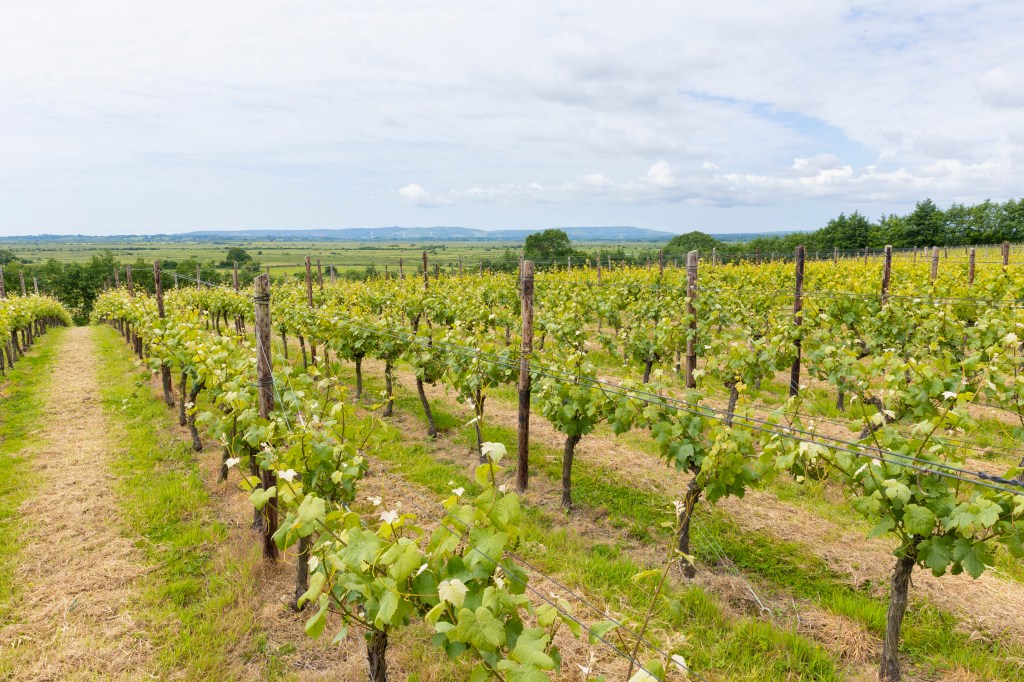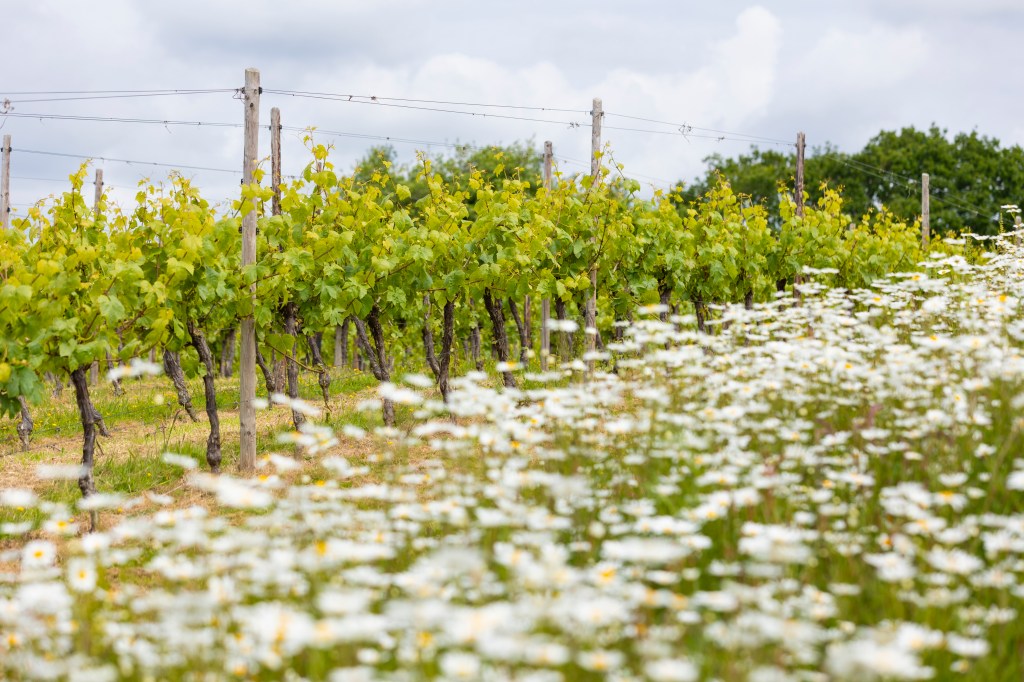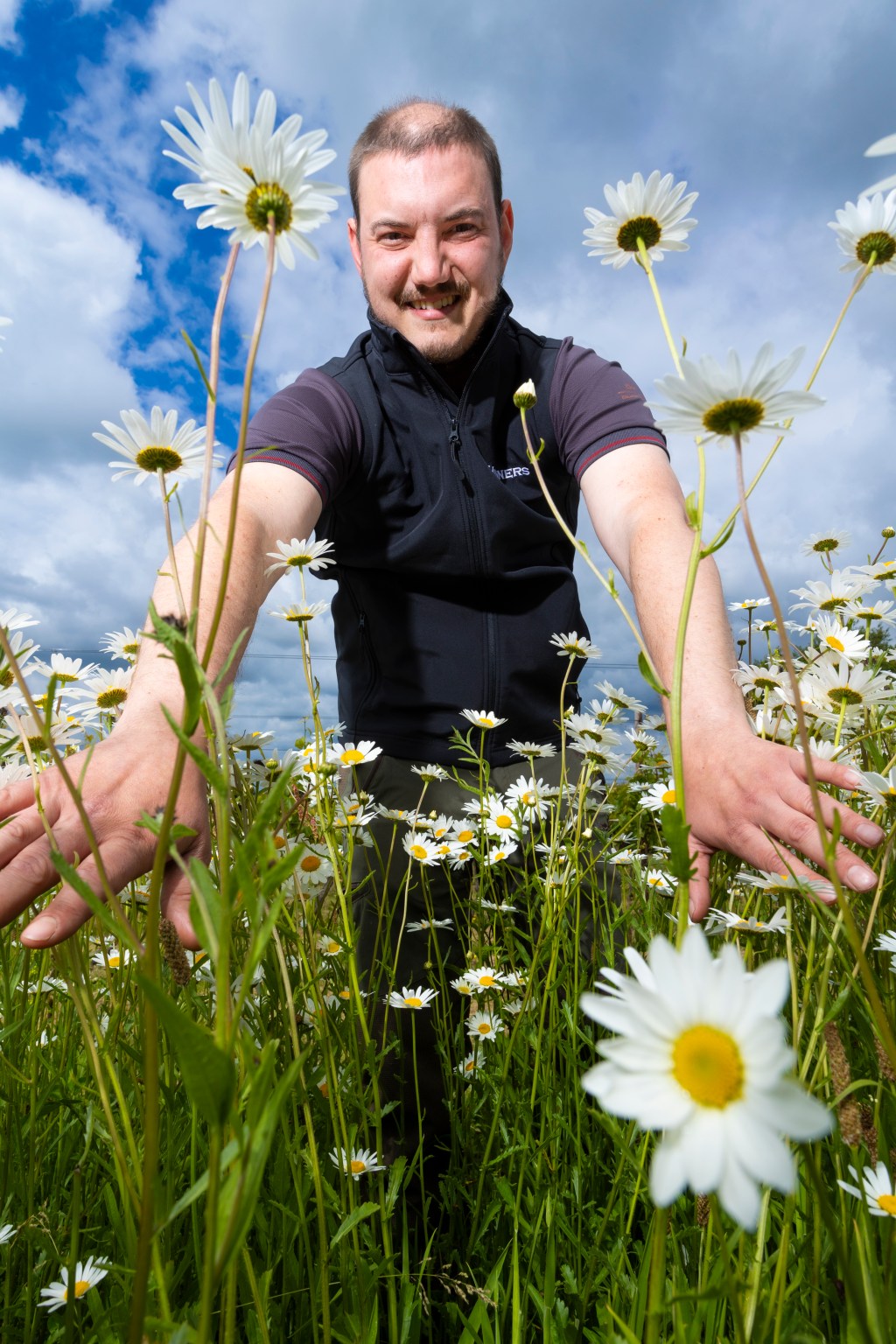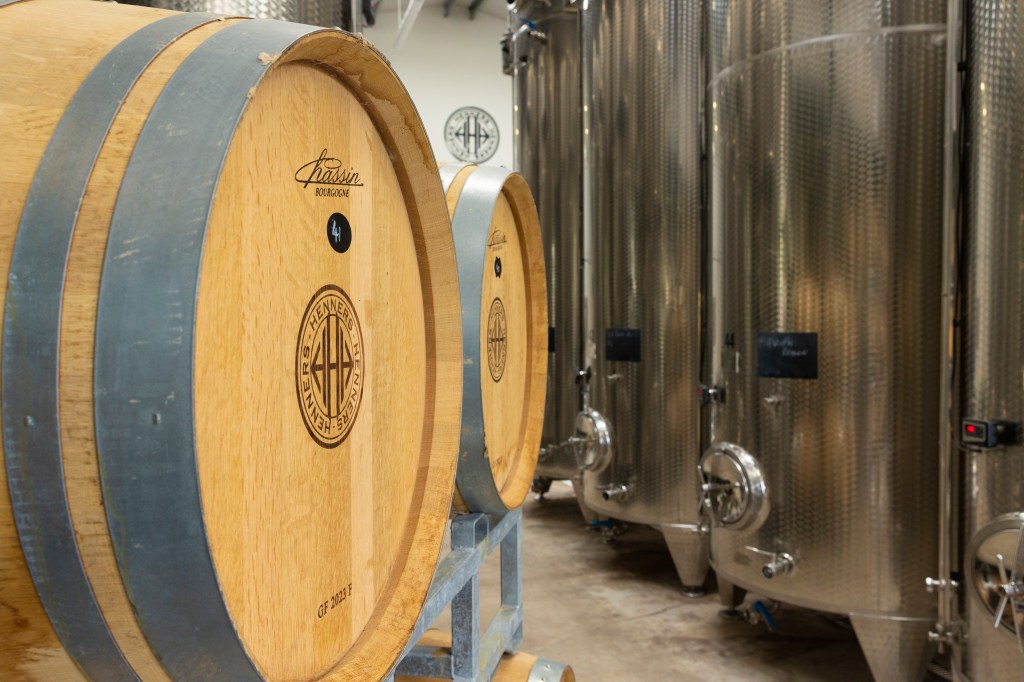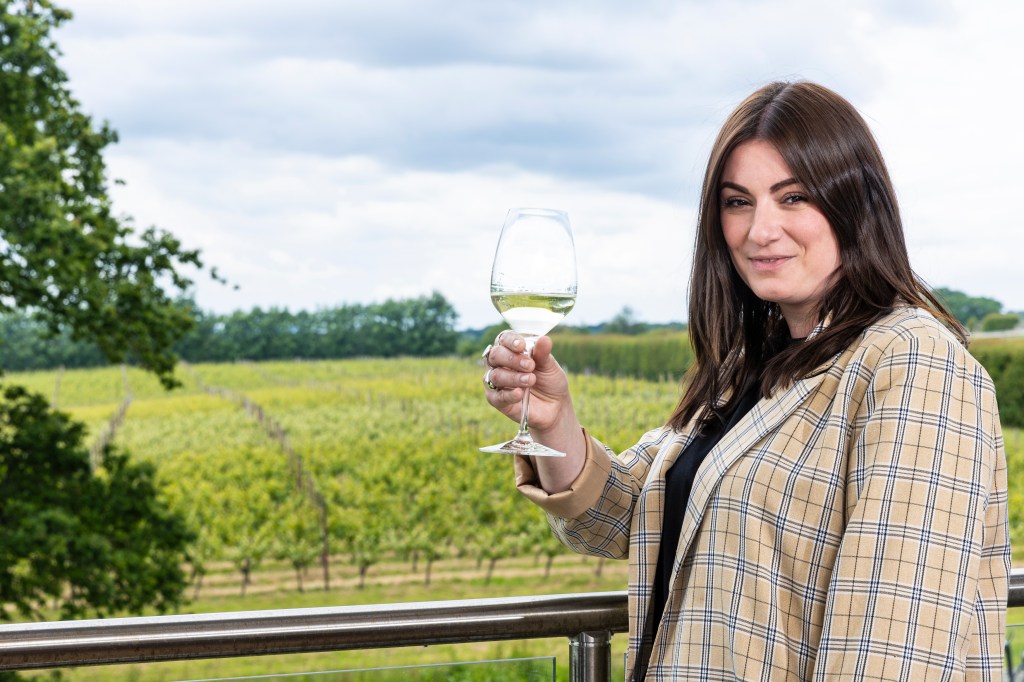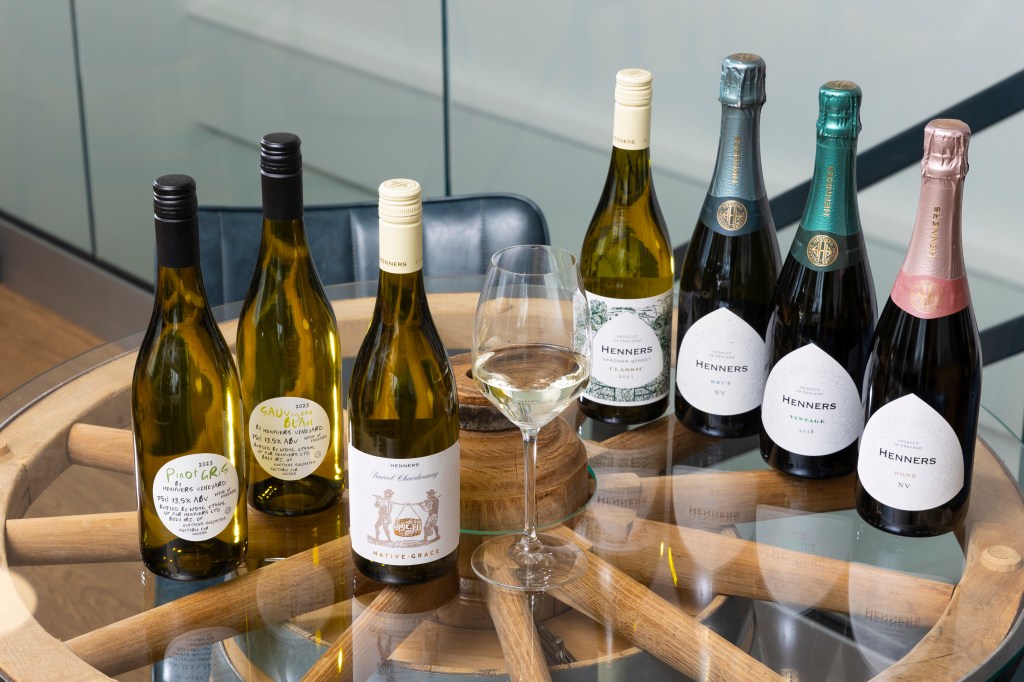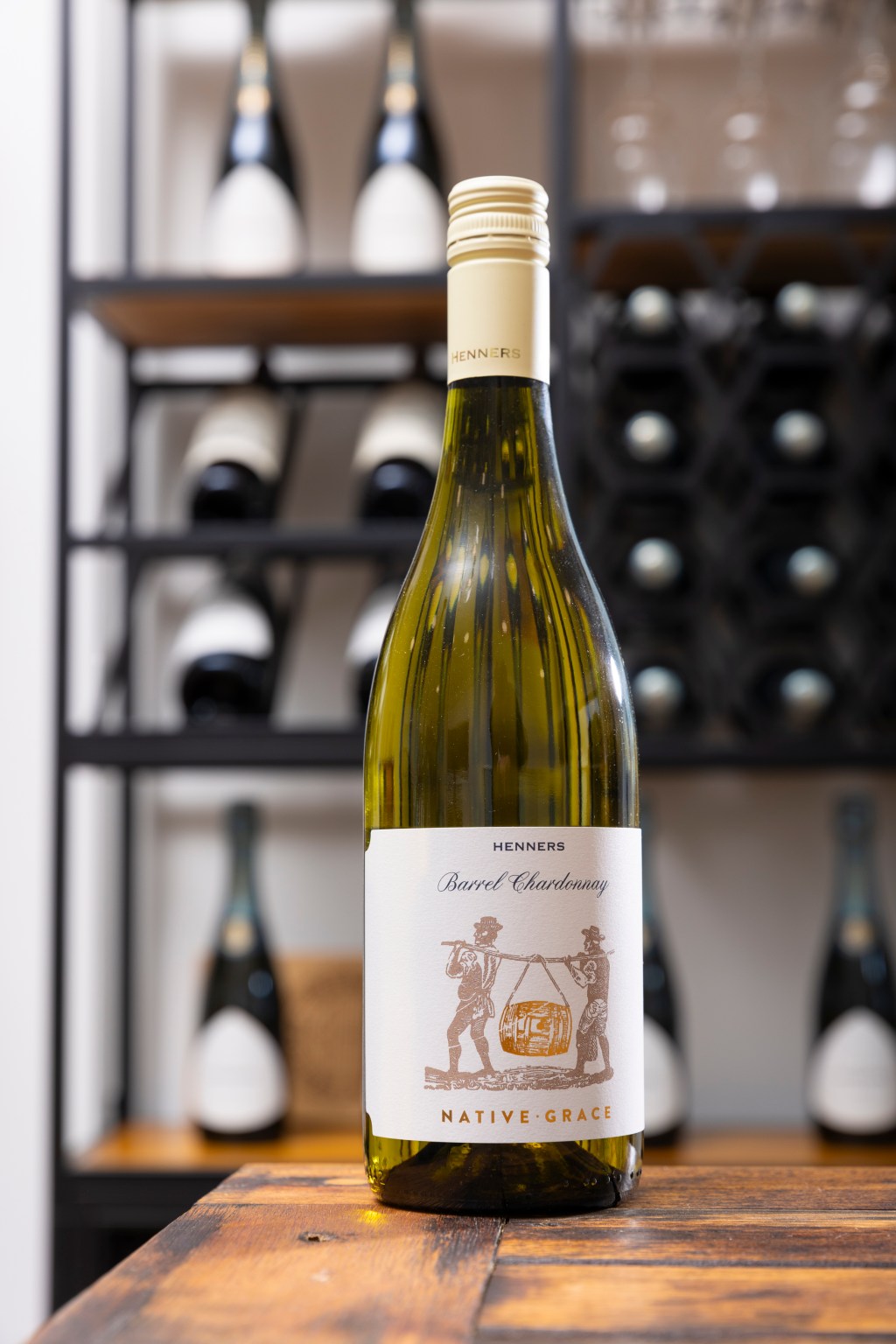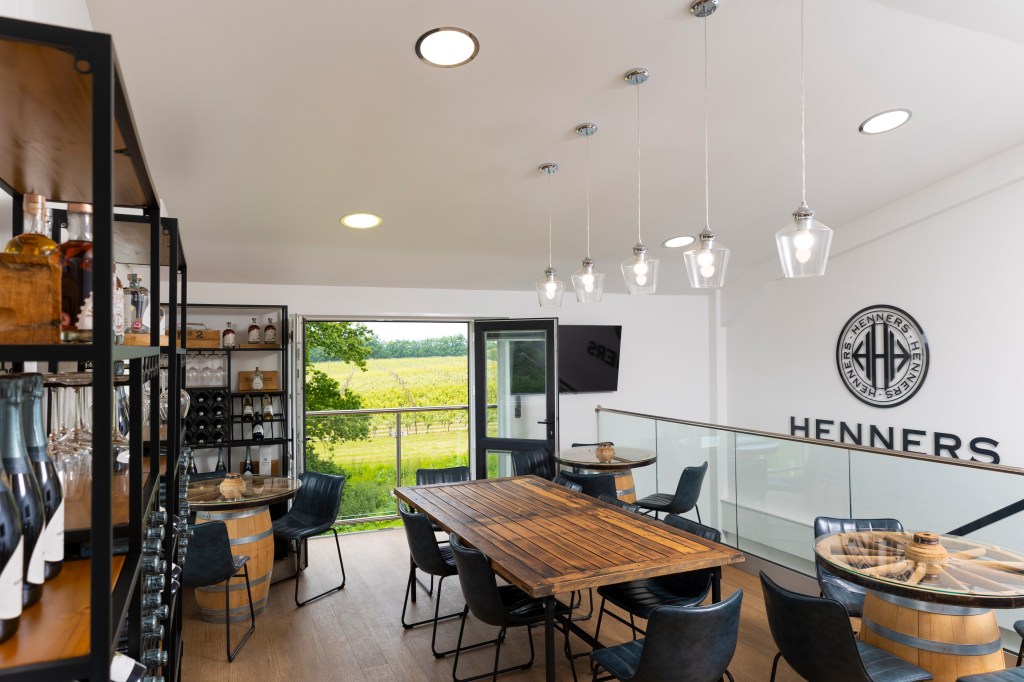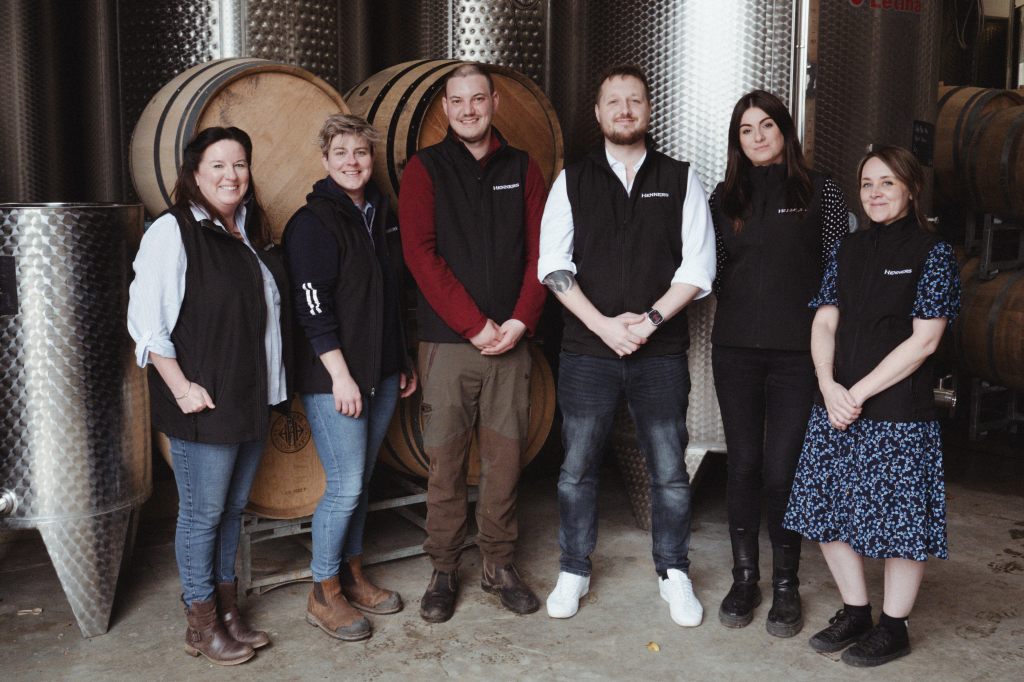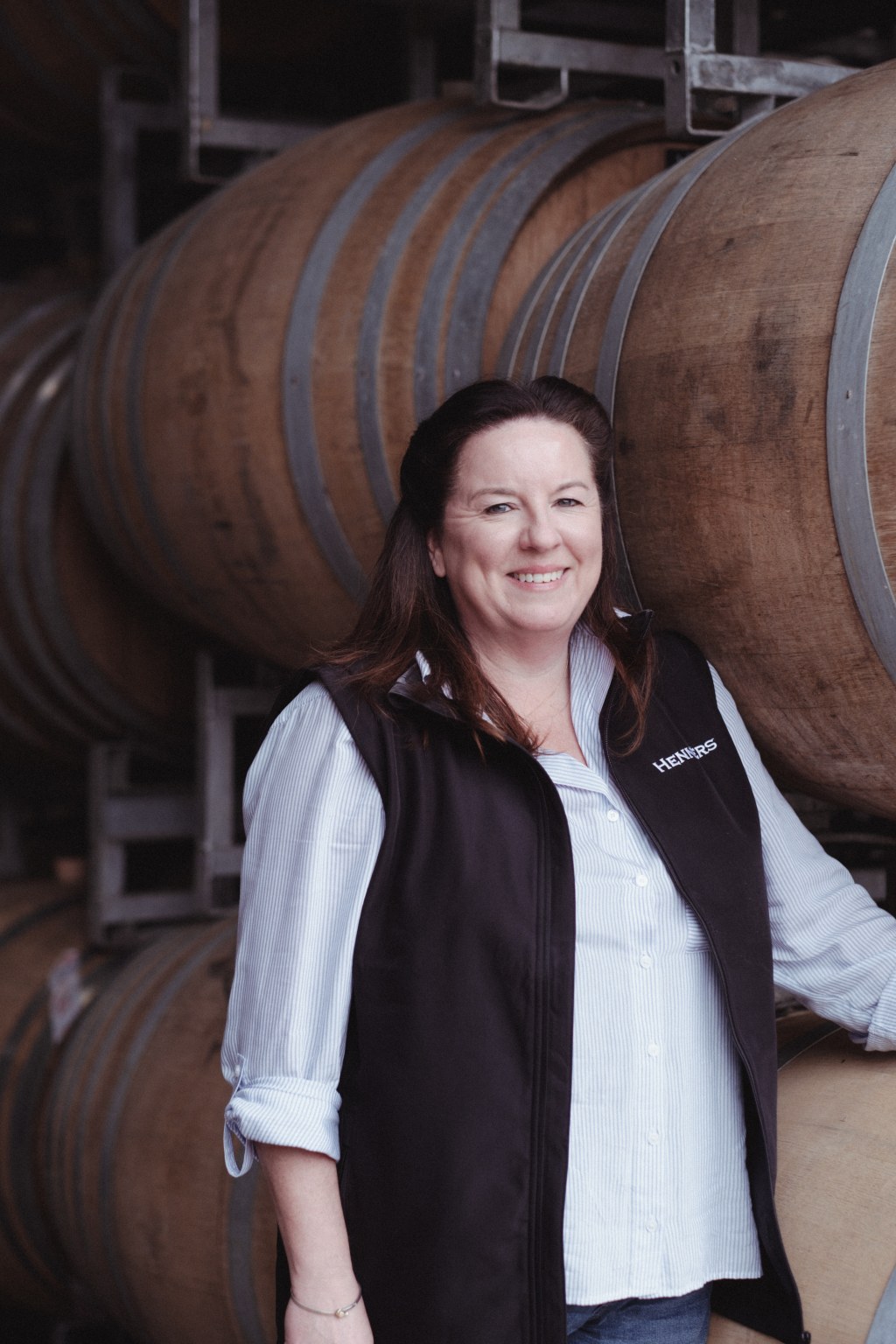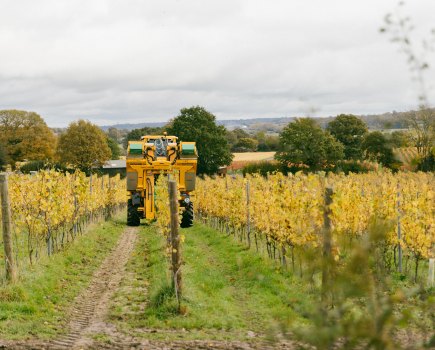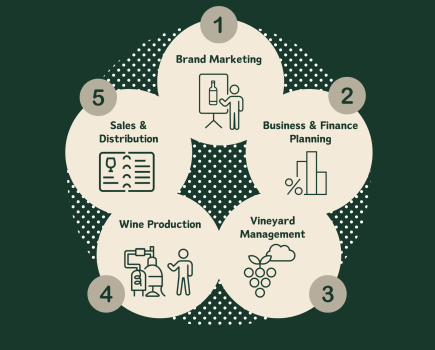Henners Vineyard was originally planted in 2007 and by 2009 there were 3ha of Pinot Noir, Pinot Meunier and Chardonnay vines on this site situated in the village of Herstmonceux bordering the Pevensey Levels a Site of Special Scientific Interest.
The now well established vines were originally planted by Lawrence Warr who developed a working relationship with the wine distributor Boutinot. This company that sells more than 44 million bottles of wine a year has become significantly more hands on over the decades since they initially began trading in the 1980’s. Boutinot now has French Vineyards alongside a South African operation and in 2017 purchased Henners Vineyard with the bumper 2018 harvest being the first under the new ownership.
The 2023 harvest saw the small team headed by Collette O’Leary process 360 tonnes of fruit. Sam Williams the assistant winemaker explained: “The winery has a maximum production capacity of 300,000 bottles.” The winery has never reached full capacity but has produced 240,000 in a season. 2024 however, will mark a turning point with a far greater focus on Henners label wines and this will give the team greater control over decision making regarding how and when fruit comes into the winery.
With such a large volume of fruit arriving at the winery and also having a harvest on site the conversation quickly turns to logistics. In 2023 Bacchus grapes arrived on the 28 September and the Sauvignon Blanc arrived on 1 November. In a five week period 360 tonnes of fruit were processed by the small team. The Henners fruit is picked over a three day period with the teams in the vineyard picking around 12 tonnes a day.
“Logistically it is tough at harvest. Collette arranges dates, times and transport and how this fits in to the functioning day and what is physically able to be processed. We have one 4.5 tonne Willmes press and we can process five press loads in a day but that is a long day with split shifts,” said Sam.
There are plans for a storage area to be converted to an area that would allow the winery to have an extra press which would relieve some of the stress caused by simply not having enough hours in a day. “One piece of equipment with such a big harvest is pushing everything to the maximum mechanically as well,” said Sam.
The team at Henners is very small; there is considerable crossover in the jobs and roles that they undertake and with such a tight harvest they must all work together. Beth Killalea, Head of Direct Sales at Henners made a really touching comment: “In terms of teamwork we learned through Boutinot and the French vineyards that everyone breaks for lunch and we have a cooked lunch everyday of harvest. It is very much the team coming together no matter how the day is going.” Sam added: “It is timed around the press load and over the years we have learned the art of one pot meals and we all chip in.”
Henners has been in expansion mode since 2017 and has ambitions for further growth, with investment plans in the winery, production, vineyard and tourism facilities. This has seen them seek out long-term partner vineyards to work with.
“Having longer term contracts with growers allows us to have conversations around the fruit and the levels of sugars required,” explained Sam. “The team visit the partner growers throughout the year,” said Richard. “Yield estimating early is important. Last year estimating in September was too late, not just for looking at a green harvest but from a winery capacity point of view as it does not give sufficient lead times. We start our estimates at the end of July the minute we are through flowering and have seen fruit set,” explained Sam.
Growers working with Henners are able to benefit from the knowledge and skills of Collette and her small team and often seek advice “I get text messages with pictures that ask how to deal with certain things in the vineyard,” said Richard. His calm confident demeaner ensures that those growers (who may be in their first few growing seasons) will feel they have plenty of support as they improve their own skills. “We have a small site and we can really hit all the points in the season and then take these to the growers and offer them advice on what has worked but it is still their decision whether or not to use those techniques,” he said.
“Also we talk about the type of wine that the growers would like the grapes to produce. For example one of our partner growers would like some of his grapes to make a still wine and then our advice would be to section that block off and look at the yield because that will have to be lower. Our advice would then be if you are expecting eight tonnes per hectare for sparkling then you will need to lower your expectations and crop thin early to achieve higher sugar levels for still wines,” Sam added.
The vineyard at Henners aims to produce around eight to ten tonnes of fruit per hectare each season. However grower partnerships are an important part of the wines produced by Henners. Sam explained: “We wanted to develop long term relationships with partner growers rather than working season by season.” This model allows the winery team to work with varieties such as Bacchus, Pinot Gris and Sauvignon Blanc. “The Winery is set up with stackable tanks so that we can better focus on individual parcels and how they are fermented,” said Sam.
When Sam explained the unique nature of the winemaking at Henners she uses an analogy that shows how deeply she believes in the quality of the wines that are produced at Henners. “It is like a piano, the more keys that are on the instrument the more complex the tune that can be achieved. Using the small stacking tanks and playing with a mix of parcels from different sites brings a mix of clay, chalk and greensand to the melody.” This is all made possible by the relationship with partner growers whose geographic locations include Essex, Suffolk and Kent. “There are some newer plantings with partner growers that will be coming online this year,” added Sam.
With this system Henners have seasonal wine making flexibility around a solid core of award winning wines. These small batch wines also increase the visibility of the brand as a whole and appeal to both existing and new customers. The labelling of the wines is also designed to recognise their unique nature. “We have been able to produce wines that are for sale at the cellar door such as small productions of Pinot Gris that are not part of the traditional Henners offering of sparkling wines or the still Gardner Street White and Rosé,” explained Sam. “Being owned by Boutinot we have access to such a wealth of winemaking experience across the world and that is such a benefit when dealing with grapes such as Sauvignan Blanc,” Sam added.
The core wines consist of Sparkling Brut NV, Sparkling Rose NV and Gardner Street White and Rosé still wines. The winery has worked hard to ensure that the Brut and the Rosé are blended across vintages so that they are consistent. The word consistent comes up in conversation time and again in connection with the sparkling Brut and Rosé as such a bottle of Henners Brut or Rosé is identifiable from its flavour profile no matter when it is enjoyed.
Exceptional years such as 2018 will allow the production of vintage sparkling wines. “All the base wines go through malolactic conversion and that really has become part of the DNA of Henners sparkling. We are never going to lack acidity with our wines so the wines are softer before they go through secondary fermentation and are not just relying on age on lees and they will be consistent,” said Sam.
Walking through the vineyard with Richard Morris, Henners vineyard manager it is obvious that the vines are flourishing. “The vines are flying at the moment which is great but trying to keep on top of it is difficult. May was a big bottling month and so I was out of the vineyard for a few weeks and in that time they have flown up. The first wires are starting to go up now and a second round of bud rubbing is happening at the same time,” he explained. Richard has been at Henners since August so this is his first full season at the vineyard.
“It is a vigorous site and trying to tame it is a struggle but I would prefer it that way than be struggling to produce a healthy canopy,” Richard added. This inevitably leads to a discussion about disease pressure. “This year I have been very alert to possible mildew because it has been very wet but what we really focus on is crown thinning to increase airflow but it is quite an open site and the humidity does not get too high so disease pressure is naturally low,” he concluded.
The wet weather acting on the clay soils has also caused Richard some problems using the tractor in the vineyard. “I wanted this year to put in a cover crop of a brassica mix to deal with some compaction issues in the vineyard but I couldn’t get the tractor on to sow the seeds so that is going to have to be put back to next year, I am now very aware of tractor passes,” he explained.
For under vine management the vineyard use a boisselet but again it was so wet that by the time is was able to be used it was struggling to cope with the dense weeds. “It is a bit like a boxing match and you win some rounds and you lose some, this year we lost a few rounds to the weather,” said Richard showing the patient side of his nature.
The 2023 yield was large and so the team will be trying to manage yield this year and not stress the vines. “We had a huge yield in 2018 and a large yield in 2019 but across the UK in 2020 yields were down 40% due to berry size, bunch numbers and a dry year,” said Sam with a note of concern in her voice. “We know that the site will comfortably produce eight to ten tonnes a hectare so that will be our aim,” she added.
With the beautiful backdrop of the Pevensey Levels so much a part of the experience at Henners Vineyard it is part of the ethos of both the vineyard and winery to ensure that the environment is safeguarded for the future.
“We have bat boxes and bird boxes for integrated pest management and we have noticed that the moth and caterpillar populations we don’t want in the vineyard are actually under control. We don’t have to use sprays,” said Richard.
There is a rainwater harvesting system in place which means that the vineyard and winery is not a drain on the natural resources of the area in which it sits. “Even if we are adding a nutritional spray to the vines we are using the harvested rainwater and that system works really well,” added Sam. The vineyard makes use of biological sprays that are designed to increase the natural defences of the vines and are looking at long term studies that will hopefully allow a move away from sprays to control powdery mildew.
“We did have some SWD last year as did many vineyards so this year I have planted some plants in the hedgerows that have red berries and trials show these plants act as dead end hosts for SWD meaning the larvae do not develop. So we will see how that works through this season,” explained Richard.
It is perhaps surprising that bird predation of the grapes is not considered a problem. “There are a couple of rows of Meunier that the birds will go for but they have not gone through the vineyard; those are almost sacrificial rows,” Richard said with a smile. Sam pointed to the number of Birds of Prey in the area such as Buzzards and Kestrels as a reason for the bird population remaining in control.
There is also a dedicated wildflower strip planted on what had formerly been a line of Alder trees that had created a pocket of humidity in the vineyard. Native wildflower seeds were sown over two years ago and finally in 2024 the vineyard has a beautiful flourish of flowers. “It has been part of our vineyard tour for so long where we explain the purpose of this strip and finally this year it is in bloom and it is really pretty,” said Sam with a triumphant grin. The strip will again serve to increase biodiversity in the vineyard and as we are standing next to this area the bees are both audible and visible.
Vineyard Magazine visited Henners early in 2022 when the cellar door was a new addition to the business and since then the small dedicated team have seen this flourish. As an example Beth Killalea explained that the most recent event was the summer party and this saw around 600 people come to the vineyard. “It was great to see everyone relaxing on the grass amongst the vines enjoying the music and the food (Fish and Chips and a BBQ),” she said.
“We want the Brut and the Rosé to be joyful playful wines. People can enjoy them with food, without food, with friends. This isn’t just for one occasion but for multiple occasions,” Sam said with emotion in her voice. This sense of joy is even incorporated into the foil of the sparkling wines; when the foil is peeled of it reveals a flying seagull (henners sits only five miles from the coast).
With a new website coming online Henners really are focussing on the enjoyment of wine. One of the major messages of the new website is ‘Be More Henners’ a fun and relaxed message designed to encourage people to investigate this premium brand in a way that embraces rather than stifles the joy of wine. “We want people to come onsite and try English wine in a relaxed environment making English wine more accessible,” said Beth.
Henners vineyard has so much to offer not just excellent wines and a fantastic atmosphere but a lasting impression of what can be achieved by a small team when they work together and really believe in what they are doing. The team want each and every bottle to be a joyful experience and they feel that their product is part of the fabric of their customers lives and they have created a tourism experience that fits that ethos. The relaxed atmosphere that is evident as soon as you arrive, lingers long after you have left and a little bit is captured in every bottle.
- Richard Morris
- Sam Williams
- Beth Killalea
- The Henners team ©5degreeswest
- Collette O’Leary
Photos: ©Martin Apps, Countrywide Photographic
For more like this, sign up for the FREE Vineyard newsletter here and receive all the latest viticulture news, reviews and insight

